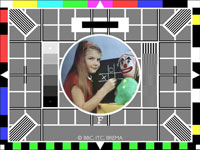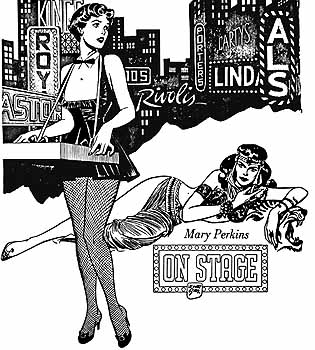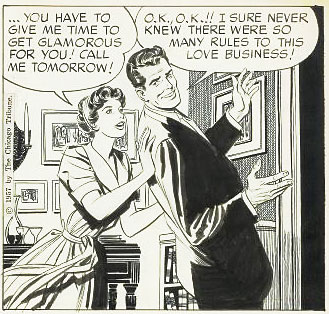 Did you know that the U.K. has an official religion? It does, the Church of England (pretty good clue in the name there). The implications of this are far reaching, but growing up, the main impact upon me personally, was the total domination of Sunday television by seemingly marathons of football and church services. There were three channels, but the third one often just had a “test screen” on it, for hours on end. You could look at it (and I did), but after 10 minutes it got boring, even for a 6 year old.
Did you know that the U.K. has an official religion? It does, the Church of England (pretty good clue in the name there). The implications of this are far reaching, but growing up, the main impact upon me personally, was the total domination of Sunday television by seemingly marathons of football and church services. There were three channels, but the third one often just had a “test screen” on it, for hours on end. You could look at it (and I did), but after 10 minutes it got boring, even for a 6 year old.
Once in a blue moon I got lucky, and the third channel had a movie on. Sure it was some weird, old, American film, but I quickly learned to enjoy them for the pure entertainment they offered. That’s how I first watched all of those Douglas Sirk and Hitchcock films. That was my first exposure to such luminaries as Doris Day, Fred Astaire, Bette Davis, Katherine Hepburn, Rock Hudson, Cary Grant, Ingrid Bergman, and Marylin Monroe. Basically the whole era saturated my winter weekends, when I was stuck indoors while it snowed or rained endlessly (and British winters are long and dismal). In contrast to my grim wintery reality, the world portrayed in these films of the 1940’s and ‘50’s seemed amazingly contrived and pretty. How were these people so perfectly groomed and fabulously dressed all the time? How did they dance and sing and smile so unceasingly? I couldn’t imagine a real world situation where things were this glamorous and dramatic all the time.
 Recently fashion began to cycle around, with some cheesy films set in the post war era, (complete with shoulder pads, great tailoring, and uptight people – I really have to wonder if the fashion isn’t the main reason for this kind of nostalgia) and on TV, my personal favorite; the AMC show Mad Men. This is all a fantastic reminder of that late ’50’s mentality and style, and a lot of recent fashions have echoed this newfound appreciation of late ’50’s/early ’60’s sassiness and tailoring. This is all well and good, I’m all for men in slim suits and women in pencil skirts and tight sweaters, but the culture… the culture is a little weirder and somewhat harder to emulate or understand in our current environment. That’s why in the end, if you really want to dive into that time, without the knowing wink of Mad Men, you really have to go straight to the source and find some of the media of the time.
Recently fashion began to cycle around, with some cheesy films set in the post war era, (complete with shoulder pads, great tailoring, and uptight people – I really have to wonder if the fashion isn’t the main reason for this kind of nostalgia) and on TV, my personal favorite; the AMC show Mad Men. This is all a fantastic reminder of that late ’50’s mentality and style, and a lot of recent fashions have echoed this newfound appreciation of late ’50’s/early ’60’s sassiness and tailoring. This is all well and good, I’m all for men in slim suits and women in pencil skirts and tight sweaters, but the culture… the culture is a little weirder and somewhat harder to emulate or understand in our current environment. That’s why in the end, if you really want to dive into that time, without the knowing wink of Mad Men, you really have to go straight to the source and find some of the media of the time.
With all of that in mind, I picked up a copy of Leonard Starr’s Mary Perkins on Stage. Originally published in 1957 – ‘58, the first book (reprinted in 2008) comprises of the first three stories of Mary’s journey from small town, moving to the big city in search of stardom. It’s a pretty standard story; of course she’s young, innocent, naive, beautiful and talented. And on all sides Mary is beset by terrible people, they seek to take advantage of her, but with her astounding talent, humility, kindness, charm and trusting nature, she wins everyone over until they’re her allies, (and throughout, she manages to stand by her principles). It’s a truly inspiring story, or for a more pessimistic person (which I can be), an outrageously unattainable standard to live by, and an irresponsible picture to paint for impressionable young women at the time. But that’s what makes it so fun.
In the past I’ve never been a fan of that particular brand of photorealistic cartoons, the kind of thing found in American newspapers, aimed at a more adult audience than Dennis the Menace. But this isn’t your average comic of the period. It’s rich, funny and delightful.
 For the most part, what truly sets this apart from other similar comics of the era is the standard and detail of the art. Each person looks like they’re a certain age, you can tell how tired they are, even their movements are distinct. These are genuine characters. And the quality of the dialogue compliments the honesty of the drawing. With all of the hackneyed plot devices available, Starr still manages to spin a gripping story. It looks as if he always used life models, even the hand movements are authentic, let alone the tiniest of eyebrow lifts. These are true actors, expressive and articulate. It’s hard not to see this as an elaborate storyboard for a film (in glorious technicolor of course).
For the most part, what truly sets this apart from other similar comics of the era is the standard and detail of the art. Each person looks like they’re a certain age, you can tell how tired they are, even their movements are distinct. These are genuine characters. And the quality of the dialogue compliments the honesty of the drawing. With all of the hackneyed plot devices available, Starr still manages to spin a gripping story. It looks as if he always used life models, even the hand movements are authentic, let alone the tiniest of eyebrow lifts. These are true actors, expressive and articulate. It’s hard not to see this as an elaborate storyboard for a film (in glorious technicolor of course).
And Starr doesn’t just do an exemplary job drawing people of all ages and physiques, he also goes all out on the clothing, hair, and jewelry. Their environments are pretty damn perfect too, it’s all highly believable. I can imagine that he was using some kind of model for the rooms and furniture, they’re so detailed and consistent (which is no mean feat when Mary works in the same place for weeks, in different outfits, in different areas, but somehow it is always instantly recognizable as the same club, whether it’s full of people, or empty).
Overall, there’s an easy simplicity to Mary Perkins’ world. Of course she has her problems, and they’re serious, big problems, but this is ultimately escapism, because Mary comes out of each situation in a better place, moving forward and upward in her life. The people she deals with might have some selfish motivations, but once they come into contact with Mary, they begin to see the error of their ways, and it’s very rare for Mary to encounter anyone who is outright mean. For the most part, the mean people get their just desserts, and Mary comes out on top, because that’s the way the world SHOULD work. People should be ultimately good at heart, and kind to each other, nurturing and caring. People who’re bad should be punished and people who’re good should be rewarded. In Mary’s world, unlike ours, this is how it works, and in that way, this book is just as much of a descent into delightful escapism as any comic about men in capes. I suppose the biggest difference is that the bulk of Mary’s dramatically draping fabric is in her skirt, not a cape, but it’s still got just as much of the drama and flounce.
Sonia Harris is an expatriot Londoner, living and working in relatively sunny San Francisco, where there is currently a Film Noir festival going on. Perfect timing!


This looks like a lot of fun. I’m an MGM musical and old Hollywood nut, so you sold me on this pretty quick.
Plus, Mad Men is too awesome for words. Have you seen Mad Men Illustrated?
Holy crap Paul, that is the best link! I love it, thank you.
I’m eagerly awaiting borrowing this book from you Sonia.
Anyone who is enjoying Glamourpuss (and that could be only me) should check this out to see real world examples of the art Sim is exploring
don;t worry Ron, there are others out there loving the history lesson Sim is bringing in Glamourpuss
So you guys aren’t bothered by his very public, mini-freakout on women (in Cerebus)? Personally, it tweaks me just enough to make me uncomfortable about buying a
derivativehomage comic/sketchbook of young women.They still publish Glamourpuss? Jeez guys, how many copies did you buy?
On the other hand, Judenhass was very moving.
it really doesn’t bother me, i could care less what his personal views are as long as the work is good. I love Alex Raymond from the old Flash Gordon strip, and it is really interesting to see how he did some of that work, as well as see that style reproduced by Sim, who also happens to be a phenomenal artist. And yeah while i certainly didn’t enjoy Judenhass it was a very powerful book.
Also this book does look fantastic, and like Paul the old MGM musicals hold a special place in my heart so i’ll definitely check this out
We really shouldn’t hijack this discussion to talk about Glamourpuss (especially in light of recent events so I’m even loathe to discuss Sim) – but for the record, as a treatise on the comic art styles of the 40s and 50s, its fantastic – nothing relating to gender politics whatsoever.
@HerrStaff – You hold a special place in my heart too, SuperStarr.
@ron You don’t want to discuss it, except to say that it’s fantastic? How is that not discussing it? The only way in which it isn’t discussing it, is you saying that we’re not allowed to express a contradictory opinion.
Ahahaha I remember the old test channel, brilliant! Also, great article Sonia. I love the old Hollywood era so this has gone straight to the top of my ‘to-read’ list 🙂